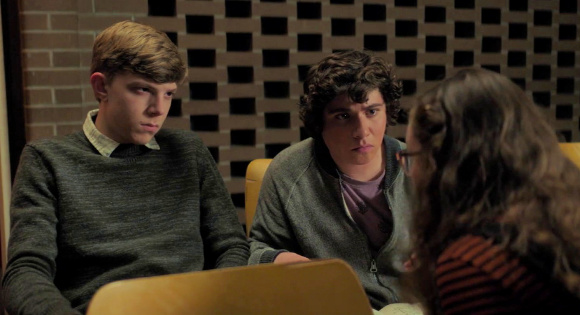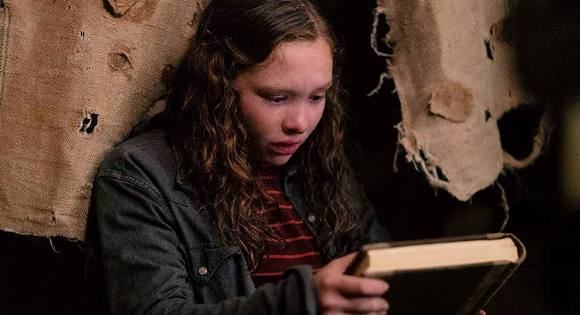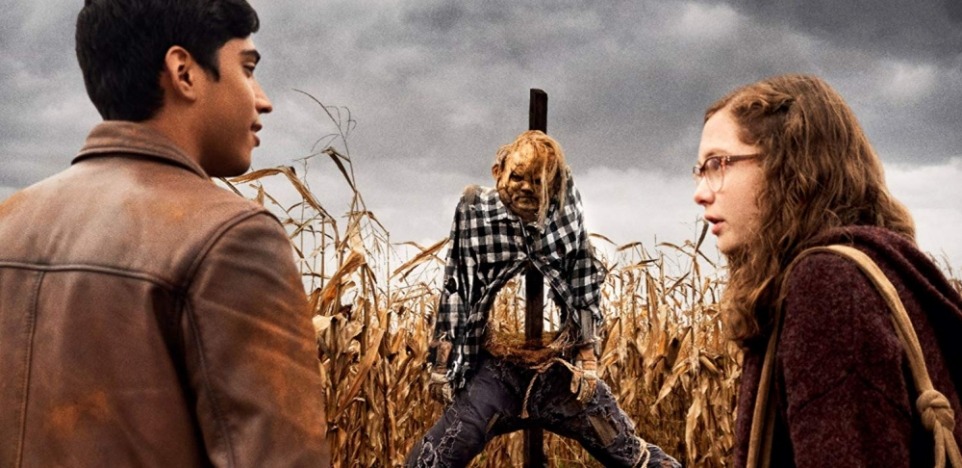“Stories are what make us,” says a young narrator at the start of André Øvredal’s adaptation of Alvin Schwartz’s Scary Stories to Tell in the Dark. “Stories can hurt, stories can heal.” And the power of stories to create reality, transform reality, and repair reality is the foundation of this creepily clever commentary on both social and individual evils. While its gruesome charms might not be to all tastes, this relatively tame take on horror tropes, with its sly skewering of our current political climate and its mostly gentle thrills, is the perfect frightfest for teens and parents to enjoy together.
A certain generation grew up feasting on Alvin Schwartz’s trilogy of terrifying story collections, and copies have been banned from school libraries and traded between sneaky students for years. Now, decades after Schwartz stopped churning out new additions, Øvredal has taken a handful of these stories and whipped them up into slightly more modern versions of themselves. He has connected them all with a framing device that adds gravity to the proceedings, offering a spirited moral that transcends cheap jump scares and celebrates the place of storytelling in our collective consciousness.

The setup is classic: It’s 1968 and teen outcasts Stella (Zoe Margaret Colletti), Auggie (Gabriel Rush), and Chuck (Austin Zajur) have some revenge plans in store for Halloween, a chance to get back at bully Tommy (Austin Abrams), who has relentlessly tormented them. Their plan takes some intended and unintended turns, and they escape from Tommy, crossing paths with a mysterious teen drifter, Ramon (Michael Garza). The group seeks refuge inside the local haunted house, a storied site of doom once owned by the Bellows family, whose recluse daughter Sarah is rumored to have crafted terrifying stories that she would tell to children who would later meet grisly ends. Once inside, Stella, who is an aspiring storyteller herself, finds Sarah’s old book of stories and takes it home, where the book starts filling in with new stories that spell out danger for everyone connected to Stella.
Sarah’s book of stories creates a compelling structure on which to hang well-known tales from Schwartz’s oeuvre. To those who grew up devouring these terrifying tales, the monsters from “Harold,” “The Big Toe,” “Me Tie Dough-ty Walker!,” “The Red Spot,” and others will be simultaneously familiar and newly frightening in the flesh. As the book fills with bloody letters and Stella’s network of friends and foes begin to fall victim to the legends of Sarah’s imagination, Stella fights to get the book back to its hiding place and to solve the unresolved mysteries of Sarah’s tortured existence once and for all.

Around these mythological monstrosities lurk the real terrors of 1968. Richard Nixon is about to be elected president and the Vietnam War looms in the background, a deadly possibility for many of the teens of draft age. Øvredal allows these historical horrors to quietly permeate the film, underlining the message that stories that hurt and heal not only exist in fictional fantasy, but also in daily life. These parallels offer ample opportunity for discussion about the power of fear to erect destructive or creative tendencies in the human psyche. The allegorical elements never feel forced, a surprisingly deep feat for an otherwise frenetically fun genre film.
For good and ill, stories really are what make us. We tell ourselves stories in order to live and heal, while certain stories we tell ourselves, collectively and individually, continue to hurt, silence, or kill us. Sarah’s stories have both protected her and paralyzed her, and the film’s ending invites viewers to breathe into the fact that some stories should be dismissed in order to allow new stories to bloom. It’s a spiritual message that bears repeating, just as the best, most transformative stories do.
